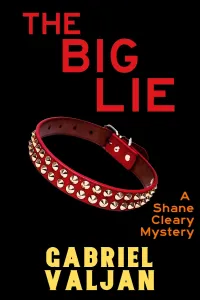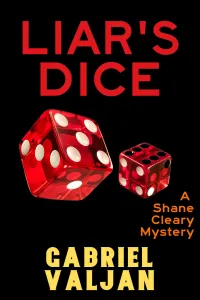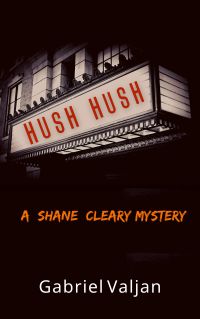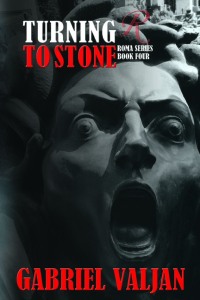The love of literature for many us has different origins; for some of us, the adventure might have begun with a parent reading to us, for others it might have been an extraordinary teacher; or that first library card; or the meeting of friends to swap books, or trade comic books. We all have our special memories: Encyclopedia Brown, Nancy Drew, The Hardy Boys, The Fantastic Four, and others.
As we get older we might look back at those ‘literary choices’ of yesteryear and think of them as childish, as less sophisticated for a variety of reasons. In an interview, Walter Mosley summed up it beautifully and with wry humor:
“The truth is, you learn how to read when you’re a kid. Who influenced you was Nancy Drew, right? If you read Beloved at the age of eight, you would either kill yourself or your mother, right? You know, I mean, you’d say, “Mom, I read this book, and I don’t buy it. You know, so one of us has to go.” I mean, that’s what you would say. You have to be an adult. But when you learn how to read, you’re a child. You love literature.”
 I was as excited as a kid this morning while reading Jeff Zorrilla’s translation of Horacio Quiroga’s slim volume of Jungle Tales or Cuentos de la selva (1918). Natalia Cortesi and Jeff Zorrilla, knowing that generations of Spanish-speaking children read these Tales in the classroom, developed the idea of providing English-readers with both a translation and an illustrated book — more on the illustrations in a moment.
I was as excited as a kid this morning while reading Jeff Zorrilla’s translation of Horacio Quiroga’s slim volume of Jungle Tales or Cuentos de la selva (1918). Natalia Cortesi and Jeff Zorrilla, knowing that generations of Spanish-speaking children read these Tales in the classroom, developed the idea of providing English-readers with both a translation and an illustrated book — more on the illustrations in a moment.
Jungles Tales is an octet of brief but entertaining short stories with subtle lessons and themes perfect for children. Friendship and alliances are Quiroga’s prevalent themes in the Tales. The author was known for darker stories, but here he is lighter and mischievous. There is some violence but none of it is disturbing. The mastery of Quiroga’s storytelling is in how seamless his narratives unfold, how he creates his animal worlds using spare but poetic metaphors. If Quiroga had any bias in these tales, it seems that he did not like jaguars. ‘Giant Tortoise’ is a tale of unexpected compassion and reciprocity between a man and, you guessed it, a giant tortoise. ‘Flamingo Stockings’ is a hilarious party with a misunderstanding that ultimately explains why flamingos have red legs and why they like to hang out in the water. If only Quiroga had explained why the kneecaps are on backwards on the birds! ‘The Bald Parrot’ is a cautionary tale of a naive tea-loving parrot named Perdito. ‘The Alligator War’ is about the consequences of youth not respecting wisdom, about defending ‘home’; it’s Quiroga being his most explicit about Man against Nature. ‘The Blind Doe’ is maternal love, healing, and friendships. You can discover the remaining three stories about coati cubs, a river of stingrays, and a lazy bee on your own.
 Bert van Wijk illustrated this edition with handsome animal drawings and vibrant colors of red, orange, yellow, and green. The font is especially readable and I particularly enjoyed the layout on the page. Quiroga’s exposition is spaced nicely apart, with the dialog grouped together, which is ideal for the reading parent and child to share together, or for a teacher and student reading in the classroom. Cortesi and Zorrilla have also provided the reader in either language, English or Spanish, with an illustrated glossary for the numerous animals within Jungle Tales. I had not known what a tatú carreta or a surbí were (giant armadillo and tiger-striped catfish). The very last page offers a map of Quiroga’s Misiones. I’d like to add that this edition would assist the advanced-beginner student of Spanish literature and language; it makes for a wonderful introduction to the Uruguayan writer, one of the greats who has been compared to Edgar Allan Poe and whom Roberto Bolaño listed as first in his list of must-read writers.
Bert van Wijk illustrated this edition with handsome animal drawings and vibrant colors of red, orange, yellow, and green. The font is especially readable and I particularly enjoyed the layout on the page. Quiroga’s exposition is spaced nicely apart, with the dialog grouped together, which is ideal for the reading parent and child to share together, or for a teacher and student reading in the classroom. Cortesi and Zorrilla have also provided the reader in either language, English or Spanish, with an illustrated glossary for the numerous animals within Jungle Tales. I had not known what a tatú carreta or a surbí were (giant armadillo and tiger-striped catfish). The very last page offers a map of Quiroga’s Misiones. I’d like to add that this edition would assist the advanced-beginner student of Spanish literature and language; it makes for a wonderful introduction to the Uruguayan writer, one of the greats who has been compared to Edgar Allan Poe and whom Roberto Bolaño listed as first in his list of must-read writers.
For those who do read Spanish and for others wanting a taste of Quiroga’s descriptive powers (and humor), I alternate the opening sentences of ‘The Flamingos’ Stockings,’ presenting it first in Quiroga’s original, then in Jeff Zorilla’s translation.
Cierta vez las víboras dieron un gran baile. Invitaron a las ranas y los sapos, a los flamencos, y a los yacarés y los pescados. Los pescados, como no caminan, no pudieron bailar; pero siendo el baile a la orilla del río, los pescados estaban asomados a la arena, y aplaudían con la cola.
[One day the snakes held a grand ball. They invited the frogs and the toads, and the flamingos, and the alligators and the fish. The fish, because they can’t walk, weren’t able to dance; but because the ball was held on the riverbank, they would hop up onto the sand and clap along with their tales.]
Los yacarés, para adornarse bien, se habían puesto en el pescuezo un collar de bananas, y fumaban cigarros paraguayos. Los sapos se habían pegado escamas de pescado en todo el cuerpo, y caminaban meneándose, como si nadaran. Y cada vez que pasaban muy serios por la orilla del río, los pescados les gritaban haciéndoles burla.
[The alligators, in order to look their best, put on banana necklaces and smoked their best Paraguayan cigars. The toads glued scales over their bodies and wiggled around on the dance floor as if they were swimming. And each time that they passed, very serious, along the riverbank, the fish would shout and make fun of them.]
Las ranas se habían perfumado todo el cuerpo, y caminaban en dos pies. Además, cada una llevaba colgando como un farolito, una luciérnaga que se balanceaba.
[The frogs put on lots of cologne and walked on two feet. And each one carried a firefly that hung swinging like a little lantern.]
My only quibble was one blank page between stories (page 59). I wished that Natalia Cortesi and Jeff Zorrilla had offered me a paragraph or two about their background or inspiration for this edition. They offer a brief Prologue to introduce Quiroga to the reader and they graciously acknowledge all their supporters at Kickstarter. My complaint is minor, though.
Norman Thomas Di Giovanni, Edith Grossman, the late Edwin Honig, and Gregory Rabassa are translators of Hispanic literature I admire, but I’m grateful that Natalia Cortesi, Jeff Zorilla, and the numerous patrons at Kickstarter have given readers this Quiroga gem. I’d like to hear that American students are reading this in our classrooms. This book made me happy as a kid. Priceless.
Translated by Jeff Zorrilla
Illustrations by Bert van Wijk
ISBN: 978-0-615-70807-2
87 pages
$14 USD














